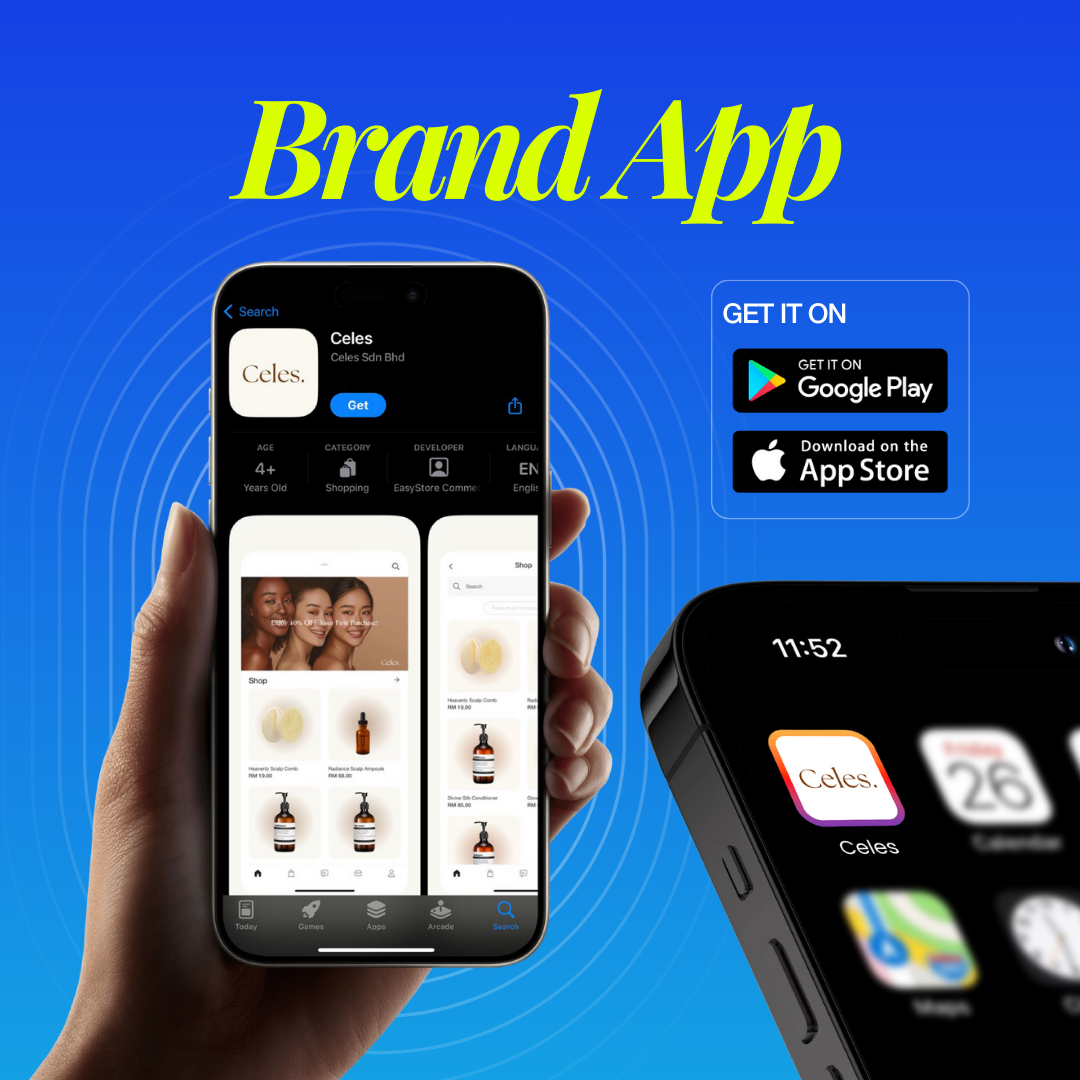3 Key Elements To A Successful Online Business
By Eric Lian · 30th September, 2018

Successful businesses usually have similar traits on how they operate, the same goes to online businesses. With the emerging trend of ecommerce in Asia, everyone wants to grab a piece of this cake so that we won’t be left out in the industry.
Upon collecting insights for this, I have compiled the following 3 important key elements which will be really helpful for businesses selling online. Without further ado, let’s jump right into it.
1. Finding the right product to sell
A good product is always beneficial for the market and business. But the challenge is whether the product really fits your business or market that you are in. Therefore, there are ways to search for the right products that fit.
Identify the customer pain point
Solving a customer pain point has always been a great way to get sales. A pain point is a specific problem that prospective customers of your business are experiencing. In other words, you can think of pain points as problems, plain and simple.
For example, if you do not have the technical skills or money to hire someone to build a website for you - EasyStore.
There are ways that you can gather customers pain point such as, analyze social media channel, be the customer, leverage the customer touch point, map out the customer journey, qualitative surveys.
Capitalize on the trend early
To get the biggest benefit, be the first mover. It is rare for any single entrepreneur to be the only one who sees an opportunity. Most will hesitate and not move at all. Many others will not move swiftly enough. Lasting competitive advantage usually goes to the first entrant to stake a market out and capture customer loyalty. Those who come later usually have to settle for slimmer profits and more competition.
Ways to capitalize on trends:
- Anticipate change- Change can be either social as in the rise of socially responsible business -- or technological, as exemplified by the growth of mobile commerce. Sometimes change can be both. Social media is a great example of that.
- Distinguish short-life fads and long-term trends - Duration is short with fads, and only affect 1 industry, Fad items are rarely expected to endure, but trends tend to survive the decade in which they were created.
Finding an opportunity gap
Opportunity gap is the marketing opportunities that business and their competitions were completely missing. Finding an opportunity gap involves looking at a particular product, niche or industry and identifying a problem or deficiency that can be capitalized on. What can you do different or better from what everyone else is currently doing? An opportunity gap may exist in the form of an improved product feature, an unrealized market by your competitors, or even in your marketing capability.
For example: With emerging trends of smart devices, Uber allows their customer to order a taxi through an app, whilst allowing the customers to track their driver and the length of time they will take to get to the customer. Utilizing the full potential of technology to fill that gap.
A more relatable case is where you sell particular niche market online. For example, You can sell a specific collection of sports gear such as knee pads or elbow guard in Malaysia market, which has little to none competitions.
Finding products in keywords
This approach is fairly technical and involves a strong understanding of keyword research as well as SEO. Finding opportunities in keyword searches can be an effective strategy for capturing consistent organic traffic from Google. This strategy is particularly useful if you plan to dropship products, as margins on drop-shipped goods are thin making it difficult to use paid advertising channels effectively.
You can use tools like Google Webmaster, Google Keywords planner, Search Metrics, etc.
2. Create an inspiring story
People tend to be fond of listening to stories. By telling stories of your company or business to your customers, it touches the feelings of the readers which will greatly contribute to the incoming traffics to your store.
Creating the “WOW” effect
This is the first step to prevent a person from scrolling. The 'wow' element of the image makes the readers stop and wonder where/who it is - making them wanting more information and letting them escape from their current location and situation.
This is why NatGeo have their largest following on Instagram, 81.7 million. This may be surprising as Pinterest is a great platform to create visual boards, but NatGeo doesn't provide a large description (or story) to accompany the visuals on Pinterest as they do on Instagram - supporting that the art of storytelling is a rising trend that engages users and keeps them coming back for more. Visuals are great, but simply not enough.
The image has approximately 8 seconds to engage the viewer further - the average attention span before you risk losing the users attention and they are lost to you, scrolling past your content and finding cat videos, memes, and the latest internet viral trends - so make those 8 seconds count.
Creating a wow effect does not always have to be an image, a good story is within the story itself.
Hook your audiences with the first sentence
A great opening sentence opens your reader’s head as well. It grabs their attention, and keep them reading. Great opening sentences are critical when you’re writing for the internet, where readers have the attention span of fruit flies. It is equally important as putting up images to grab attention.
Plus, numeric reference is usually more attractive than just boring characters. As people tend to be drawn to numbers than alphabet words.
Asking a question will also make your customer think, so they will stop and work their mind to think about it. Increasing the effort spending time with your story.
Identify your Core Values For Your Audience To Connect With
Core values are what you absolutely stand for when it comes to the brand: it’s the non-negotiable beliefs that the brand just cannot live without and that the target audience will share.
Have to first understand your own core values and how you want to present it as a story to your audience. For example, we make it easy for small businesses to build their brand online. Core values are meant to humanize the brand by acting as conversation starters that spark thoughts, discussions, and emotional engagement in your audience. These values also become the foundation for a content strategy. By consuming your content, the audience should be able to feel what the brand stands for without having it spelled out.
Your own story is the most unique. You do not have to worry about following the footsteps of those predecessors.
3. Make an irresistible offer
Promotions are very common for businesses in getting more sales. However, what truly makes an offer irresistible is when the offer truly brings out the value of the products you sell.
Make an astonishing guarantee
Remember that if you’re selling online, people can’t experience the thing you’re selling before they part with their money. They can’t see it, hear it, touch it, taste it, or smell it. So there’s always a level of uncertainty and risk. A guarantee helps you lower the feeling of risk by answering questions such as “Is it all you say it is? What if it isn’t? Can I return it if I want to? Is there a catch?”
For example, guarantee the refund if the product quality does not provide as promised.
With a guarantee, they feel confident that they won’t be stuck with their purchase. And the very act of offering a strong guarantee lets buyers know you really believe the product is worth its asking price.
Throw in the incentives
Incentives can give consumers an opportunity to try something with low risk, or offer a "free gift with purchase" that appeals to the target audience for a product.
Premiums or gifts that enhance a product or service, are popular as well. Just be careful that the gift doesn't overshadow the actual product. Offers like these often create repeat purchases, customers tend to come back for more of these offers because they enjoy receiving benefits like this from you.
Create the sense of urgency
People tend to take action when it is the last minute. Nothing gets the customers' feet moving till the last minute. For example, telling your customers there is limited stock will trigger the urgency in customers action.
This approach is effective because it encourages your customers to take action within the time limit. There’s no reason why you can’t provide deals after tomorrow unless you run out of stock!
Another example will be setting a deadline to a promotion, setting deadline prompt your customers to take out their wallet within the time limit. Or better yet, tell them its the last day of sales, then customers will start swarming in your store.
The key elements above will be useful for business. However, there are still numerous ways of running a successful business online. So, do not limit yourself, keep your options open and dreams big!
Latest articles
-

March 2025 Product Updates
By Cavan Koh · 9th Mar, 2025
-

How These Retailers Use UCX to Prepare for Ramadan—and Keep Customers Coming Back
By Frost Chen, Poh Sook Yan · 2nd Mar, 2025
-

1,000 SMEs to Benefit: EasyStore and Partners Sign MoU to Empower Unified Customer Experience (UCX) for Retail and Ecommerce
By EasyStore Press · 26th Feb, 2025
-

Let Business Help Business Supports Over 1000 Local SMEs Across Malaysia
By Amirul Asraf · 15th Feb, 2025
-

EasyStore Launches Brand App: A Game-Changer For Customer Experience
By Kelie Wong · 13th Feb, 2025
-

February 2025 Product Updates
By Cavan Koh · 9th Feb, 2025